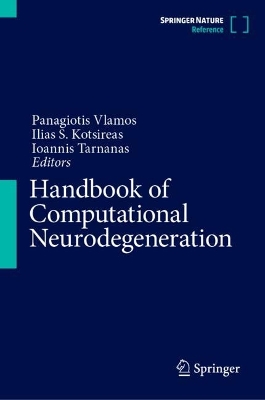Stress, Trauma and Synaptic Plasticity
 -15%
portes grátis
-15%
portes grátis
Stress, Trauma and Synaptic Plasticity
Bennett, Maxwell; Lagopoulos, Jim
Springer International Publishing AG
03/2019
231
Dura
Inglês
9783319911151
15 a 20 dias
672
1. Grey matter changes in the brain following stress and trauma
1.1 During maturity
1.2 During Childhood
1.3 Animal Models
2. Synaptic changes responsible for grey matter changes in the brain of animal models following stress
2.1 Changes in the number of neurons, astrocytes and oligodendrocytes following stress
2.2 Changes in the length and volume of dendrites following stress
2.3 Discussion
2.4 The relation between stress-induced decreases in synapses/dendrites and grey matter loss
3. Identification of the core neural network subserving PTSD in animal models and their modulation
3.1 Animal models of PTSD
3.2 Neural circuitry subserving animal models of PTSD
3.3 Transmitters and growth factors mediating modulation of the core synaptic circuit in PTSD animal models
3.4 Conclusion
4. Modulation of the core neural network in stress: the role of Brain Derived Neurotrophic Factor & LTP
4.1 BDNF gene transcription controlled by glucocorticoid and mineralocorticoid receptors
4.2 Evidence that BDNF gene transcription controlled by epigenetic changes
4.3 BDNF control of dendritic spines
4.4 BDNF/TrkB control of dendritic spines modulated by glucocorticoid and mineralocorticoid receptors
4.5 BDNF/TrkB control of dendritic spines modulated by corticotropin releasing factor (hormone)
4.6 Cannabinoid (receptor CB1) modulation of BDNF gene transcription and BDNF/TrkB control of dendritic spines
4.7 Serotonin transporter (SERT) modulation of BDNF gene transcription and BDNF/TrkB control of dendritic spines
4.8 Conclusion
5. Modulation of the core neural network in stress: the role of Endocannabinoids & LTD
5.1 The role of endocannabinoids
5.2 Functional amygdala networks in acquisition and extinction
5.3 Classical LTP and LTD in the functional networks mediating acquisition and
5.4 Endocannabinoids in functioning networks in the basolateral amygdala
5.5 Functional amygdala networks that mediate extinction: the roles of LTDi and endocannabinoids at extinction neurons in the basolateral amygdala
5.6 Conclusion
6. Functioning of the core neural network in fear and extinction
6.1 Fear
6.2 Extinction
6.3 Synaptic plasticity
6.4 Modelling the amygdala in fear and extinction
6.5 Identifying the site of extinction failure in the amygdala
6.6 BDNF function at synapses in the core neural network for extinction
6.7 The role of the MeCP2 complex in extinction
6.8 Hypotheses concerning mechanisms for extending periods of extinction
Appendix 1: F-actin determination of dendritic spine integrity
Appendix 2: Regulation of NMDA receptors
1. Grey matter changes in the brain following stress and trauma
1.1 During maturity
1.2 During Childhood
1.3 Animal Models
2. Synaptic changes responsible for grey matter changes in the brain of animal models following stress
2.1 Changes in the number of neurons, astrocytes and oligodendrocytes following stress
2.2 Changes in the length and volume of dendrites following stress
2.3 Discussion
2.4 The relation between stress-induced decreases in synapses/dendrites and grey matter loss
3. Identification of the core neural network subserving PTSD in animal models and their modulation
3.1 Animal models of PTSD
3.2 Neural circuitry subserving animal models of PTSD
3.3 Transmitters and growth factors mediating modulation of the core synaptic circuit in PTSD animal models
3.4 Conclusion
4. Modulation of the core neural network in stress: the role of Brain Derived Neurotrophic Factor & LTP
4.1 BDNF gene transcription controlled by glucocorticoid and mineralocorticoid receptors
4.2 Evidence that BDNF gene transcription controlled by epigenetic changes
4.3 BDNF control of dendritic spines
4.4 BDNF/TrkB control of dendritic spines modulated by glucocorticoid and mineralocorticoid receptors
4.5 BDNF/TrkB control of dendritic spines modulated by corticotropin releasing factor (hormone)
4.6 Cannabinoid (receptor CB1) modulation of BDNF gene transcription and BDNF/TrkB control of dendritic spines
4.7 Serotonin transporter (SERT) modulation of BDNF gene transcription and BDNF/TrkB control of dendritic spines
4.8 Conclusion
5. Modulation of the core neural network in stress: the role of Endocannabinoids & LTD
5.1 The role of endocannabinoids
5.2 Functional amygdala networks in acquisition and extinction
5.3 Classical LTP and LTD in the functional networks mediating acquisition and
5.4 Endocannabinoids in functioning networks in the basolateral amygdala
5.5 Functional amygdala networks that mediate extinction: the roles of LTDi and endocannabinoids at extinction neurons in the basolateral amygdala
5.6 Conclusion
6. Functioning of the core neural network in fear and extinction
6.1 Fear
6.2 Extinction
6.3 Synaptic plasticity
6.4 Modelling the amygdala in fear and extinction
6.5 Identifying the site of extinction failure in the amygdala
6.6 BDNF function at synapses in the core neural network for extinction
6.7 The role of the MeCP2 complex in extinction
6.8 Hypotheses concerning mechanisms for extending periods of extinction
Appendix 1: F-actin determination of dendritic spine integrity
Appendix 2: Regulation of NMDA receptors















